Capybaras (Hydrochoerus hydrochaeris), the largest rodents on Earth, are fascinating creatures known for their gentle temperament, semi-aquatic lifestyle, and highly social behavior. Their unique traits and adaptability have made them a topic of intrigue for researchers and animal enthusiasts worldwide. To fully appreciate the story of capybaras, it’s essential to explore their origins, habitats, and the role they play in their ecosystems.
The Origins of Capybaras: A South American Native
Capybaras are indigenous to South America, a continent renowned for its diverse ecosystems ranging from tropical rainforests to vast savannas. Their natural range spans multiple countries, including:
- Brazil: Home to some of the largest populations of capybaras, Brazil’s Amazon rainforest and Pantanal wetlands provide ideal habitats.
- Venezuela and Colombia: These regions host extensive grasslands and water sources, making them prime locations for capybaras.
- Argentina, Uruguay, and Paraguay: The expansive floodplains and wetlands in these countries offer the perfect combination of food and water for capybaras.
- Peru and Bolivia: Capybaras are found in the lowland tropical forests and river systems of these nations.
Interestingly, capybaras are not found in Chile due to the imposing barrier of the Andes Mountains, which restrict their migration westward. Their presence in South America highlights the intricate relationship between wildlife and the continent’s diverse ecosystems.
Habitats: Where Capybaras Thrive
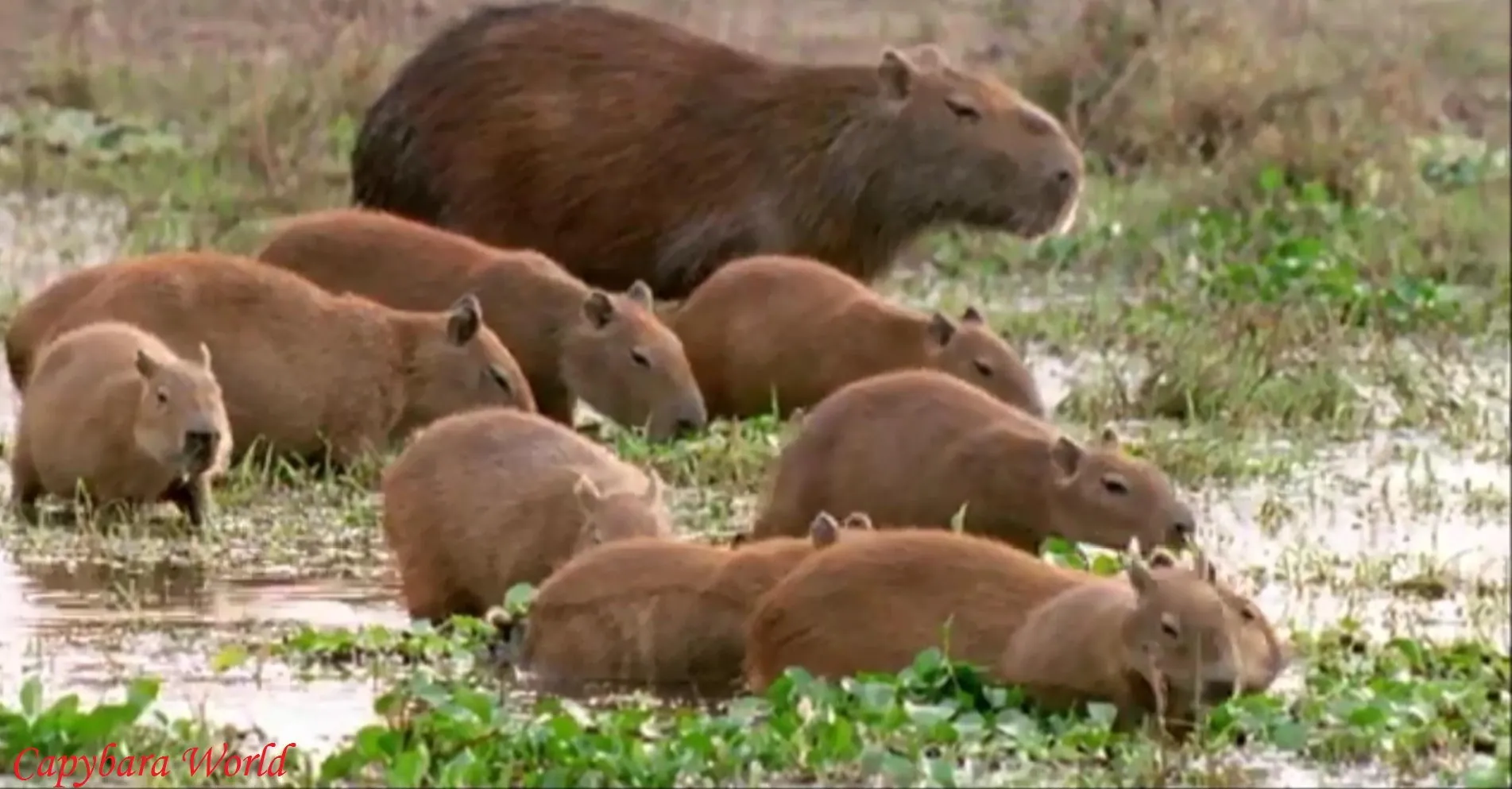
Capybaras are highly adaptable and can thrive in various environments as long as water is readily available. Their preferred habitats include:
1. Wetlands and Marshes
Capybaras are semi-aquatic animals, and wetlands provide them with ample water for swimming, cooling off, and evading predators. These environments also offer abundant vegetation, their primary food source.
2. Grasslands and Savannas
Flooded grasslands, especially in the rainy season, are common habitats for capybaras. These areas provide not only grazing opportunities but also pools and streams that are essential for their aquatic needs.
3. Tropical Forests
In regions like the Amazon rainforest, capybaras can be found near rivers and streams within dense forest areas. The shade and moisture of these forests make them an ideal refuge during hotter months.
Their dependency on water cannot be overstated. Capybaras are rarely found far from water sources, as they rely on these environments for survival in multiple ways.
The Role of Water in Capybara Behavior
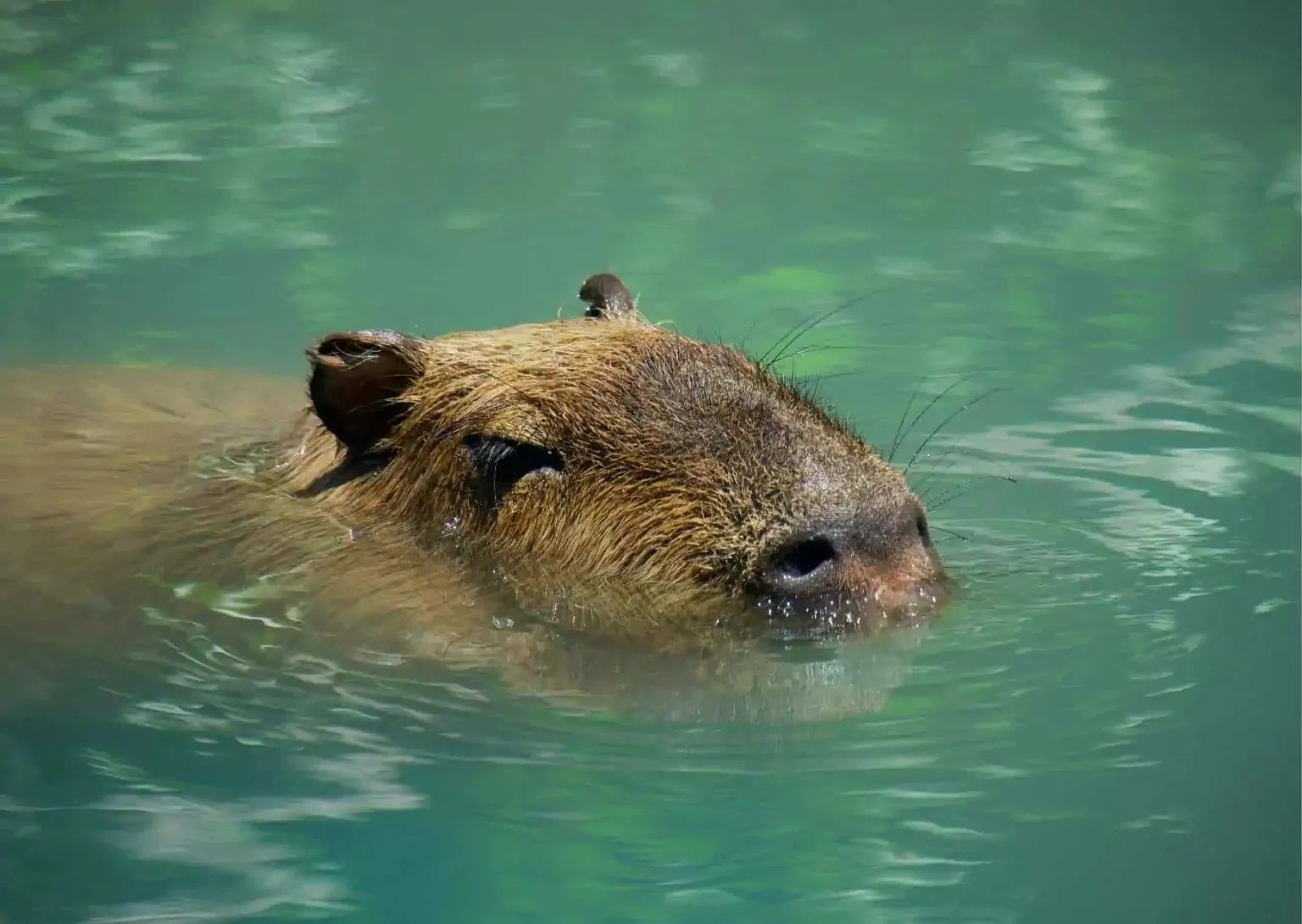
Water is a critical element of capybara life, serving various functions that are vital to their survival:
- Thermoregulation: Capybaras lack sweat glands and depend on water to regulate their body temperature. They often submerge themselves in ponds, rivers, or lakes to cool off during the heat of the day.
- Protection from Predators: When faced with threats from predators such as jaguars, caimans, or anacondas, capybaras instinctively retreat into water. Their ability to remain submerged for up to five minutes is a key defense mechanism.
- Social Interaction: Capybaras are highly social animals, and water bodies often serve as gathering points for their groups, fostering communal behaviors such as grooming and play.
Social Structures: Living in Groups
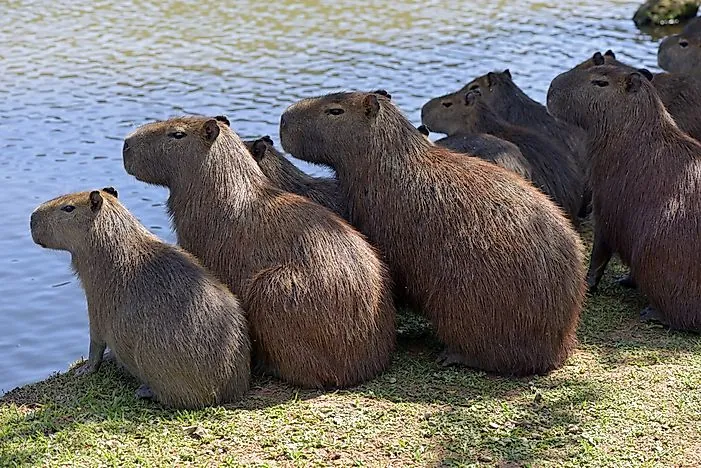
Capybaras are inherently social creatures, usually forming groups that range from 10 to 20 members. In some cases, especially in areas with plentiful resources, these groups can grow to include 50 individuals or more. Their social structure is typically organized as follows:
- Dominant Male: Each group has a dominant male who leads and protects the group.
- Females and Offspring: Females and their young make up the majority of the group.
- Subordinate Males: These males play supportive roles and may challenge the dominant male for leadership under certain conditions.
This social arrangement allows capybaras to work collectively in activities like vigilance against predators and raising their young.
Dietary Preferences and Feeding Habits

Capybaras are herbivores, with their diet primarily consisting of grasses, aquatic plants, and other vegetation. Seasonal changes significantly influence their feeding habits:
- Wet Season: During this time, capybaras graze on fresh, lush grasses that grow in abundance.
- Dry Season: When grass becomes scarce, they turn to alternative food sources such as reeds, bark, and even fruit if available.
An unusual but critical aspect of their diet is coprophagy, the act of eating their feces. This behavior allows them to extract additional nutrients, especially from fibrous plants, by re-digesting food to break down cellulose.
Beyond South America: Capybaras in Non-Native Regions
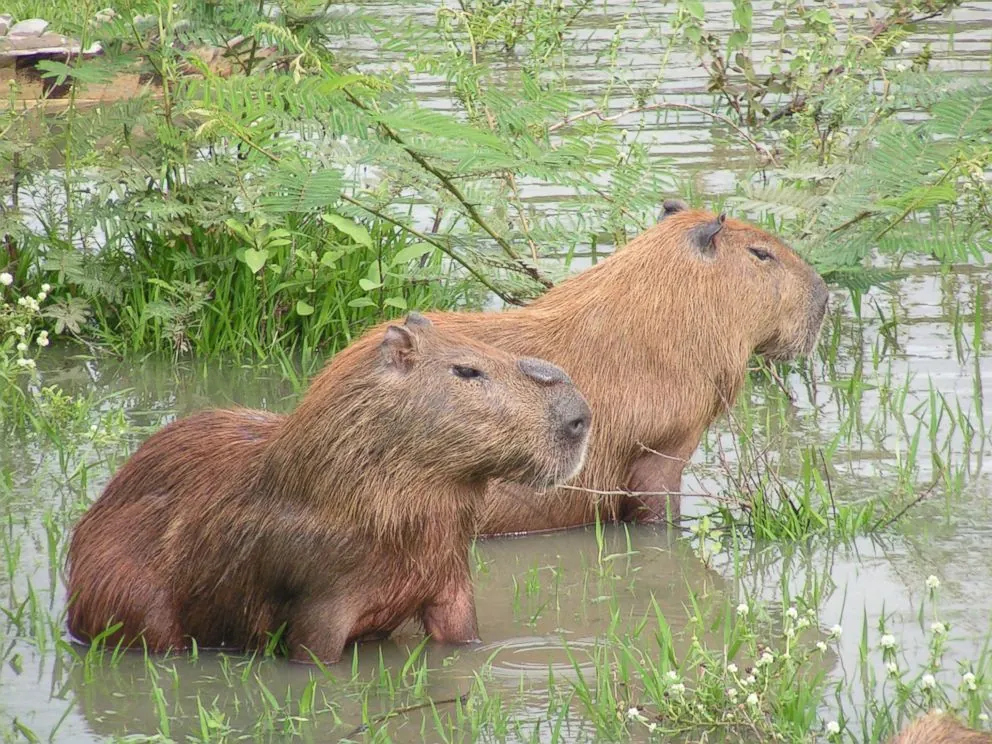
While capybaras are native to South America, human activities have led to their introduction in other parts of the world:
1. North America
In the United States, capybara sightings have been reported in states like Florida. These animals are usually escaped pets or releases, as capybaras are popular in the exotic pet trade. However, no established wild populations currently exist.
2. Asia
In Japan, capybaras have become cultural icons, frequently featured in zoos and wildlife parks. Their docile nature and ability to adapt to controlled environments have made them popular attractions.
3. Europe and Other Regions
Occasionally, capybaras are found in private collections or zoos across Europe. While they can adapt to temperate climates, they are not suited for wild existence outside of tropical or subtropical regions.
Conservation Status and Human Impact
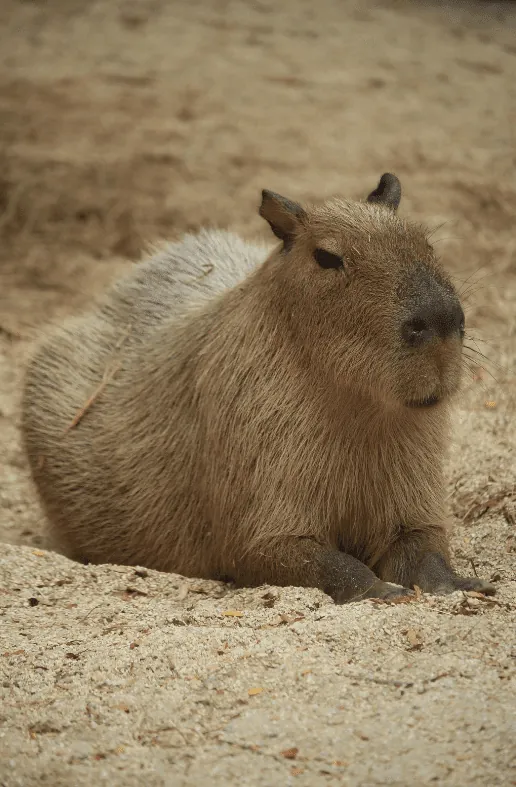
According to the International Union for Conservation of Nature (IUCN), capybaras are classified as a species of Least Concern. Their populations remain stable due to their adaptability and lack of significant threats. However, there are some challenges they face:
- Habitat Loss: Urbanization and agricultural expansion in South America threaten their natural habitats.
- Hunting: In some regions, capybaras are hunted for their meat and skin, which is used to produce leather.
Despite these challenges, their overall numbers remain robust, thanks to their reproductive capabilities and resilience.
Capybaras in Popular Culture
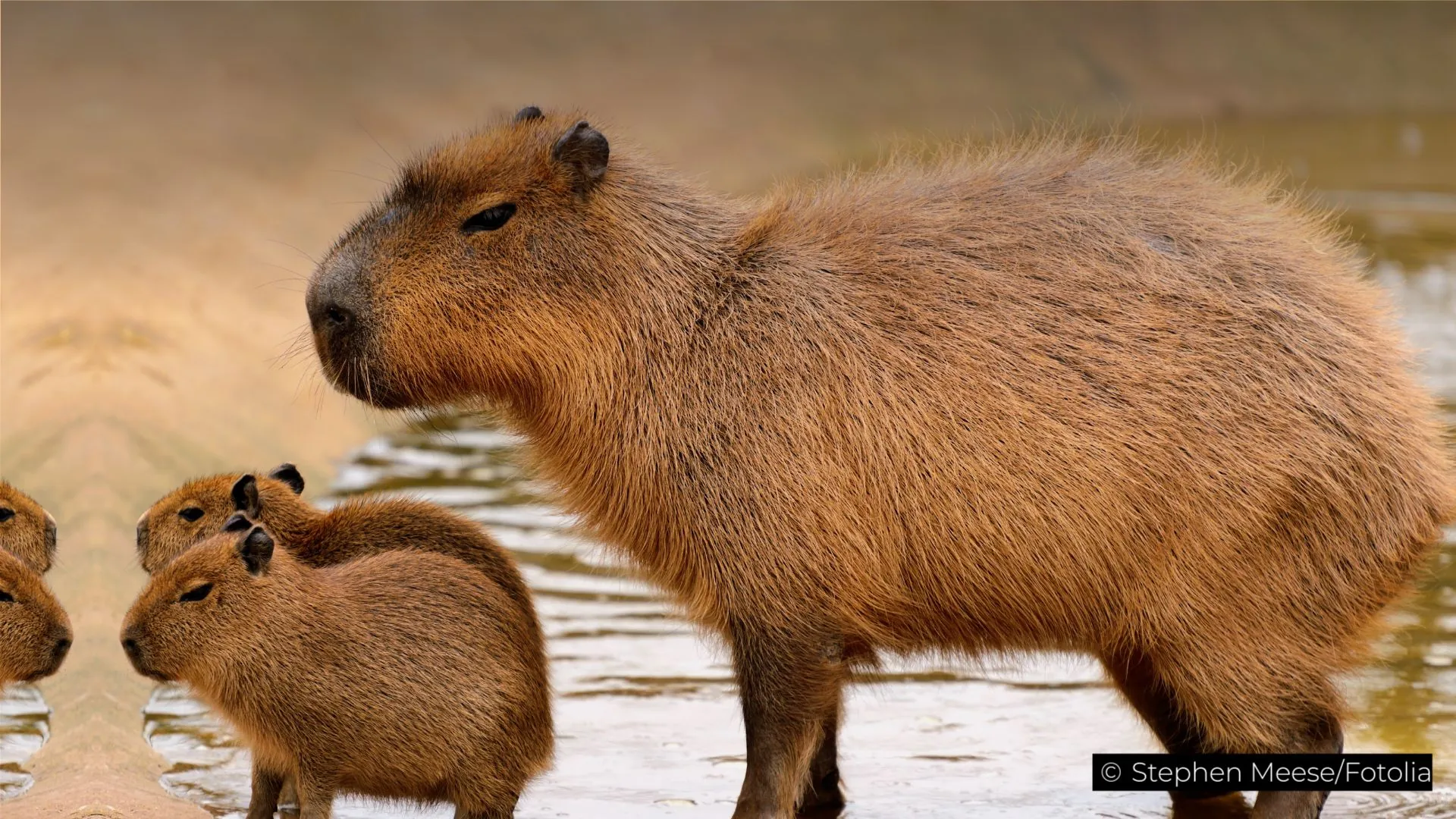
Capybaras have captured the imagination of people worldwide, often portrayed as peaceful, sociable animals. They have become internet sensations, with countless memes and videos showcasing their interactions with other animals, such as birds, monkeys, and even crocodiles. In zoos, their calm demeanor makes them favorites among visitors, particularly in countries like Japan, where they are celebrated with dedicated hot springs and themed exhibits.
Conclusion
Capybaras are extraordinary creatures that offer a glimpse into the rich biodiversity of South America. Their origins, behaviors, and adaptability to diverse habitats underscore their importance in the ecosystems they inhabit. As they gain global recognition, understanding their natural history and ecological roles is crucial for their conservation and appreciation.
From their native wetlands to zoos around the world, capybaras continue to charm and educate, reminding us of the intricate connections between wildlife and the environments they call home.
